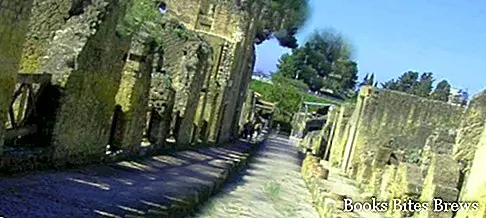What to see in Herculaneum, list of the main monuments and places of interest, including archaeological excavations, villas of the golden mile, Church of Santa Maria del Pilar and Church of San Vito.
Tourist information
A town located at the foot of Vesuvius, in a central position with respect to the Gulf of Naples, Herculaneum is part of the metropolitan area of Naples.
It is famous, internationally, for the archaeological excavations of the Roman city founded, according to a legendary story, by Hercules and later destroyed by the eruption of Vesuvius which occurred in 79 AD.
A stretch of Corso Resina, the one between the archaeological excavations and Torre del Greco, is called the Golden Mile for the wonderful eighteenth-century residences that line it, known as the Golden Mile Villas, also from Herculaneum the road leading to the crater of Vesuvius.
The archaeological excavations of Herculaneum represent a very popular tourist destination.
In addition to the archaeological area, at certain times of the year, the Herculaneum boat pavilion is also opened to the public, which was found on the ancient coast of the city.
From the number 123 in Corso Resina it is possible to go down to the Roman Theater of Herculaneum.
What see
Among the monuments and places of interest is the Church of Santa Maria della Consolazione, which is the second oldest religious building in the city, after the Basilica of Santa Maria in Pugliano, and is also known as the Church of Sant'Agostino.
The facade, reworked in the second half of the nineteenth century, is topped with three large arches with gallery and as many windows with a triangular tympanum above.
The church of Santa Maria del Pilar was built in 1748 by the lawyer Sorge as the noble chapel of the family palace, located on the opposite side of the Via Regia delle Calabrie.
Small in size, it represents an excellent example of Neapolitan rococo style, it is also called the Sorcio chapel, due to the deformation created by the Neapolitan dialect of the surname Sorge.
Recommended readings- Sapri (Campania): what to see
- Campania: Sunday day trips
- Amalfi (Campania): what to see
- Acciaroli (Campania): what to see
- Teano (Campania): what to see
The church of the Reale Arciconfraternita della Santissima Trinità was built next to the basilica of Santa Maria in Pugliano in the first half of the nineteenth century.
The facade is in neoclassical style, as well as the interior, where the altar canvas and the Choir of the Confreres in inlaid wood are preserved.
In the vicinity of the small church of the Savior, built in 1656, there is the Vesuvian Observatory of 1845 and the railway for Vesuvius, built by Thamas Cook.
The church of San Vito, which was built in 1747, in the countryside of the homonymous hamlet, on a base of lava rock, has a rococo-style facade and interior.




